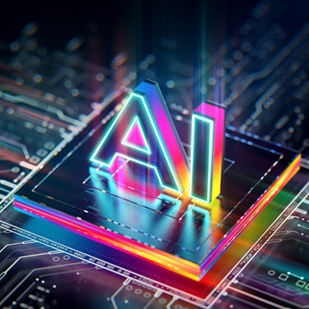An AI accelerator is a specialized processor designed to improve the performance of artificial intelligence (AI) operations. That improvement often involves strategies like optimized memory use and low-precision arithmetic that accelerate computation and minimize power usage.
Most AI accelerators are found in either data centers (often referred to as the “core”) or at the edge—any location other than a data center where data is created, collected and processed. AI accelerators designed for use at the core are able to bring more computational power, memory and bandwidth to bear. In contrast, those engineered for use at the edge tend to focus on energy efficiency.
Types of AI accelerators
As AI becomes more commonplace, new subsets emerge. Each one has a unique set of technical requirements that are eventually met by emerging technologies.
Today, there are quite a few varying AI accelerators designed for both general and specific usage. Some of the most common include:
- Graphics Processing Units (GPU) - Nearly every computer in the world includes a GPU dedicated to rendering images. But their designs, which now include hundreds or thousands of compute units, also make them perfect for performing the vast amounts of simultaneous calculations common to AI workloads.
- Field Programmable Gate Arrays (FPGA) - These integrated circuits are designed to be continuously reconfigured long after they’ve been shipped from the fabrication plant. That makes them ideal for use at the edge, where they can be updated remotely to account for environmental changes, updated power requirements, and an evolving user base.
- Application Specific Integrated Circuits (ASIC) - An ASIC is a specialized processor engineered to compute deep learning inferences. By using low-precision arithmetic, this processor can provide a faster computing process for AI workflows. One of the most famous examples of a successful ASIC is Google’s Tensor Processing Unit. As part of their DeepMind AlphaGo project, this AI was able to defeat the world’s best Go player.
The near future of AI accelerators
Newly minted household names in AI, like ChatGPT and Google Bard, are helping to bring about an AI revolution. But, as popular as those services have become, it’s important to remember that they’re just the tip of the iceberg. Below the surface are thousands of other AI applications aimed at various tasks, from guiding autonomous vehicles to writing the next great American novel.
As AI continues to proliferate, so too will the technology that powers it. AI accelerators will become faster, more powerful and more energy-efficient. Soon, they may even appear in our PCs, tablets and mobile phones. There’s no telling what will happen when the tech becomes ubiquitous. One thing’s for sure: it will undoubtedly be interesting.





















